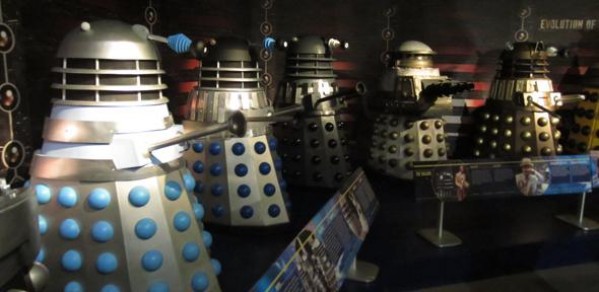
Dr Fumiya Iida, Lecturer in Mechatronics and head of the Department's Biologically Inspired Robotics Laboratory discusses the "mother" robot he has built with his colleagues, and why reacting to developments in robotics with undue fear could stifle research and creativity.
The latest research on robots is often described as if it were a step on the inexorable march toward a robot apocalypse straight out of the Terminator films. While there are risks in developing artificial intelligence that need to be taken seriously, reacting to every development in robotics with undue fear could stifle research and creativity.
For example, creating artificial intelligence that can design future versions of itself – effectively a robot that can reproduce and evolve – might help us discover innovations that humans might not consider on their own. It would need to be carefully monitored and controlled but, rather than something to fear, it could lead us to a greater understanding of the physical world and our own development.
Unnatural selection
Using artificial intelligence to improve a design by repeatedly copying it and adding a small change each time (iterative design) is not a novel approach, but it has so far been restricted to computer simulations. By modelling a group of lifeforms that can reproduce, you can simulate a process that’s similar to the natural selection of real biological evolution. The individuals that are most successful are more likely to reproduce and spread their own particular design. So after a number of generations you will eventually have an optimised version of the lifeform that a human designer may not have come across on their own.
Computer simulations of natural selection and evolution come with a series of advantages. Theoretically, the only limit to the number of generations and how fast they are produced is the computer’s speed. Models without promise can be easily discarded while potentially fruitful designs can be explored rapidly. And there is no need for a large supply of raw materials because computer memory is abundant, cheap, and takes up very little space.
The problem is that the simulated lifeforms may bear little resemblance to what can exist in the real world. Physical robots that can actually be built, meanwhile, are traditionally stuck in one shape for their entire lifecycle.

Robobabies. Fumiya Iida, Author provided
To overcome these issues, my colleagues and I have built a “mother” robot that can manufacture its own “children” without human intervention, as reported recently in PLOS One. We programmed it to produce simple robots, comprised of between one and five plastic cubes with a small motor inside, which are capable of crawling. The children are then autonomously tested to see which designs perform best.
Based on these results, the mother then produced a second generation using principles based on natural selection. It used the “virtual DNA” of the best first-generation children as a starting point for its designs in order to pass down preferential traits. The process was repeated hundreds of times and eventually the fittest individuals in the last generation performed a set locomotion task twice as quickly as the fittest individuals in the first generation.
The mother of invention
By allowing the mother to restlessly create hundreds of new shapes and gait patterns for her children, she produced designs that a human engineer might not have been able to build. The most interesting and important thing about this is that she effectively demonstrated creativity.Unlike conventional mechanical systems such as packaging robots in factories, which repeat the same motions programmed by humans, our mother robot was able to autonomously construct children without influence by human designers. As a result, she can “invent” novel designs. At the moment the children are too simple and restricted to become mothers themselves, so we don’t have a complete copy of natural evolution. As the technology advances, however, there’s no reason why this couldn’t happen in the future.

Blocks of life. Fumiya Iida, Author provided
But isn’t it too dangerous to have robots evolving by themselves? We believe not. The aim of our research is to engineer the underlying mechanisms of creativity. We wanted to know how machines can handle unknown objects, how new ideas and designs can emerge from a statistical process, and how much time, energy, raw materials and other resources are needed to create anything truly novel. The robot children created so far have given us some surprises with unique designs and motions that human engineers would be unlikely to consider in the first instance. But engineering is a bottom-up process to build up technology piece-by-piece by understanding why and how things work. So unlike biological creatures, our evolving robots are still, and will always be, within our expected boundaries and control.
Fumiya Iida, Lecturer in mechatronics, Department of Engineering,University of Cambridge. This article was originally published on The Conversation. The opinions expressed in this article are those of the individual author(s) and do not represent the views of the University of Cambridge.![]()

